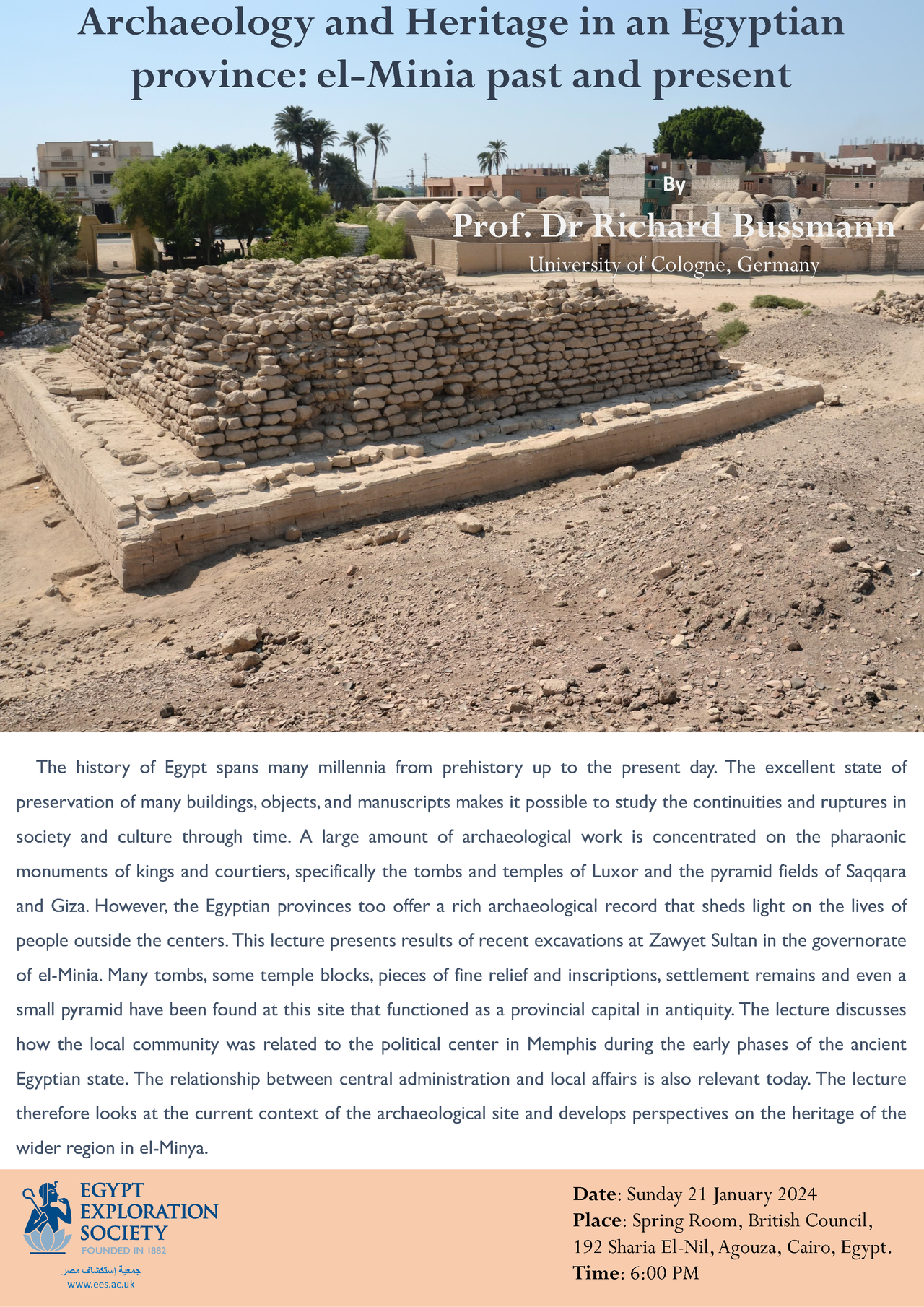The history of Egypt spans many millennia from prehistory up to the present day. The excellent state of preservation of many buildings, objects, and manuscripts makes it possible to study the continuities and ruptures in society and culture through time. A large amount of archaeological work is concentrated on the pharaonic monuments of kings and courtiers, specifically the tombs and temples of Luxor and the pyramid fields of Saqqara and Giza. However, the Egyptian provinces to offer a rich archaeological record that sheds light on the lives of people outside the centres. This lecture presents results of recent excavations at Zawyet Sultan in the governorate of el-Minia. Many tombs, some temple blocks, pieces of fine relief and inscriptions, settlement remains and even a small pyramid have been found at this site that functioned as a provincial capital in antiquity. The lecture discusses how the local community was related to the political centre in Memphis during the early phases of the ancient Egyptian state. The relationship between central administration and local affairs is also relevant today. The lecture therefore looks at the current context of the archaeological site and develops perspectives on the heritage of the wider region in el-Minya.

Click on the poster to download as a PDF


